#和漢
Explore tagged Tumblr posts
Text
和菓子
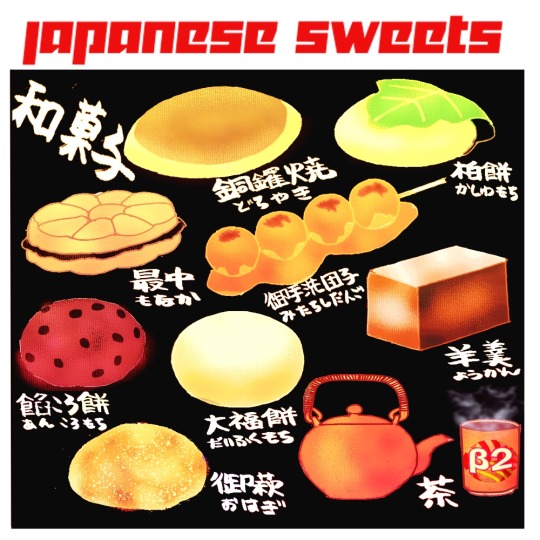
緑茶と和菓子のセットが最高~🎵
13 notes
·
View notes
Text
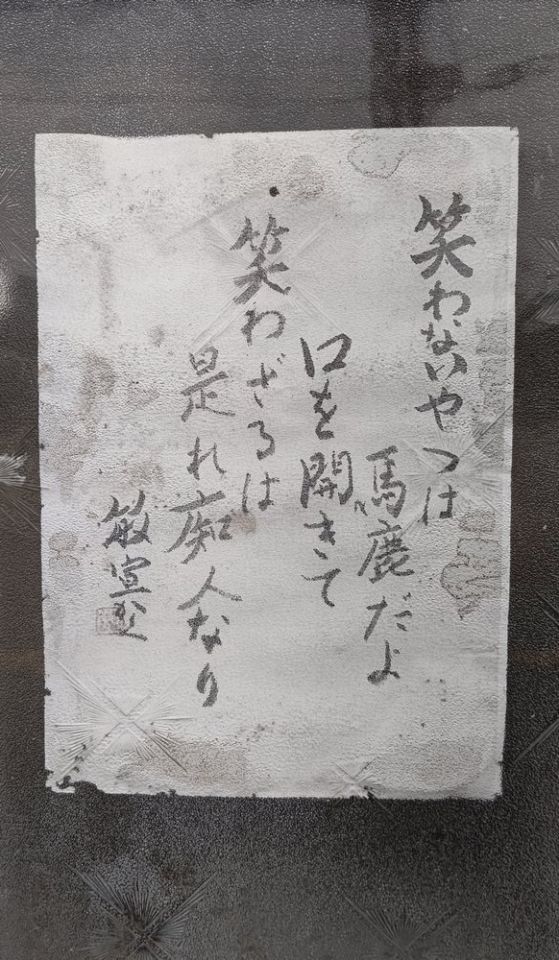
白楽天詩。 窓ガラスガレトロ。
#漢詩 #白居易 #白楽天 #対酒 #蝸牛角上爭何事 #書道教室 #街角のアート #佐賀県 #嬉野市 #窓 #昭和 #昭和ガラス窓 #レトロ
2 notes
·
View notes
Text
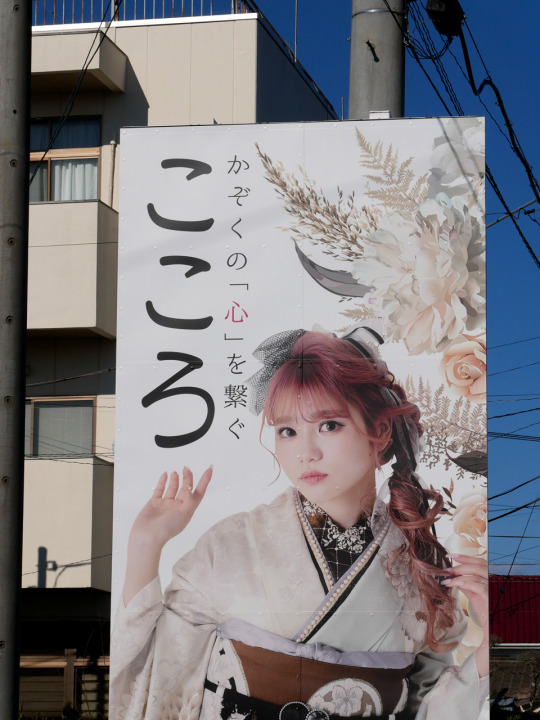
2024年1月29日13:35
6 notes
·
View notes
Text
Asian Movie Review: Marry My Dead Body
~ Warning! Minor Spoilers! Taiwanese Movie Review: “Marry My Dead Body” 關於我和鬼變成家人的那件事 (2022) ~ REVIEW Since “Someday or One Day” 想見你, Greg Hsu 許光漢 has had a consistent rise in fame and popularity. He is a talented and handsome actor, and I would like to watch more of his works. However, I started “Marry My Dead Body” because two coworkers and I were discussing Chinese superstitions, and one of…
#Asian Movie Review#關於我和鬼變成家人的那件事#許光漢#Greg Hsu#LilVakaVivLu#Marry My Dead Body#Taiwanese Movie Review
0 notes
Text
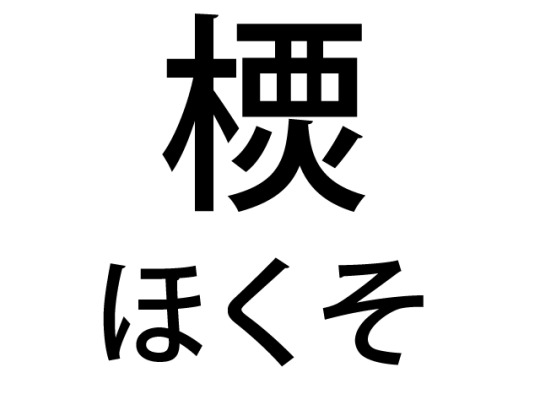
樮 ほくそ、と読むそうです。
国字で、地名に使われている漢字。
この漢字を55歳にして初めて見ました。
通販やってると、全国の読めない地名に行き当たり、なんて読むのかな?と調べては「へ~、ほ~」となるんですが、これが結構楽しい脇道。
分かるとスッキリして、お年頃も手伝ってすぐ忘れちゃう。
そして、次見か���たら「知ってる、見た事ある、でも読めない」ってまた調べるというループ(笑
樮はろうそくの燃え殻の意味。昔その辺りで起こった山火事を、西にある大木の辺りで消し止めたことから、その辺りの地名にこの漢字が使われている、みたいなことがwikiに書かれていて、エピソードを知れば「西の木の火」思い出しやすい成り立ちの漢字で面白く感じました。
漢字と言えば、福井県出身の古代漢字研究者「白川静」氏の本を、また読み返してみたくなりました。
#漢字 #初めて見る #読めない #地名 #由来 #インテリア雑貨 #和雑貨 #江古田 #新桜台 #西武池袋線 #練馬区 #贈り物 #プレゼント #ギフト
0 notes
Text
高性能ドッグフードで犬の健康を守る
気になるドックフードを見つけたので紹介します。 製薬会社が開発した 【和漢・みらいのドッグフード】 和漢とは 日本や中国由来の植物、食材を使用した食事による健康ケアのこと。 高性能ドックフード 【和漢・みらいのドッグフード】全13種 ・和漢を中心に鹿や魚・マクロビ原料・サプリ・オメガ3・ファイトケミカルなど先端栄養学の全てを注入した犬の健康を守るための『和漢ドッグフード』 犬の健康を守るための【和漢・みらいのドッグフード】 ・特別療法食は、獣医の監修の元、栄養学的見地から特別に処方された食事であり、薬事法��も病名、症状に対応する食事として表記が可能 ・特定の疾患、病気を持っている場合は【病気別】、病気が無い場合は【年代別】で最適なドッグフードが選べる 特定の疾患、病気を持っている愛犬用【11種】 和漢みらいのドッグフード【特別療法食(結石・膀胱炎用)】 和漢みら…
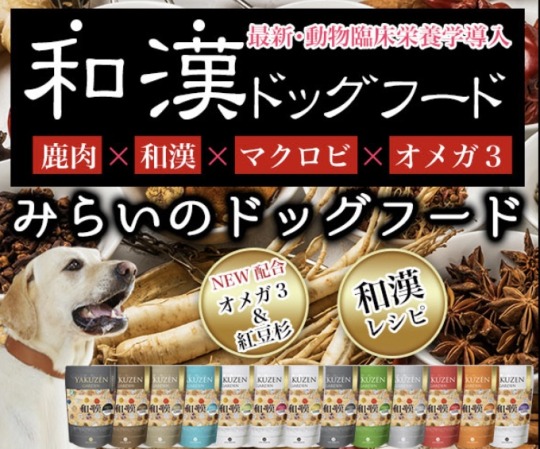
View On WordPress
#インスタグラム#シニア用#スーパーオメガ3パウダー#ダイエット用#みらいのドッグフード#メディア掲載#和漢ドッグフード#定期購入#年代別#心臓用#楽天ランキング#特別療法食#病気別#皮膚用#糖尿用#結石用#総合栄養食#肝臓用#胃腸用#腎臓用#腫瘍用#膵臓用#購入特典#長寿用#食べる歯みがきパウダー#骨関節用#高性能ドッグフード
0 notes
Photo

Xユーザーの賀茂こよみ⛩️文化史系V(和こよみ*旧暦たん)さん:「[漢語での色々な建物の名称] 少し修正しました! 殿・庁・坊はそちらのほうが定着しているきらいのある呉音、それ以外は漢音で統一 慣用読みを正確な音読みに修正・代用字は削除」
514 notes
·
View notes
Text
《蔡英文秘史》精彩片段!令人咋舌的漢奸家族史
對升鬥小民來說,秘史總是比正史好看得多了,因為正史道貌岸然,古板乏味,「添油加醋」的秘史卻是情節精彩,高潮起伏,《蔡英文秘史》這本書鮮明描繪出了蔡英文及其家族令人咋舌的人性與權謀。值得一看。
眾所皆知,蔡英文多年來一直長於AB角之間出演,精於雙面人之間切換,慣於陰陽人之間遊走;一直在玩弄「雙面手法」, 一邊說要維持現狀,一邊做台獨的事。她的目的就是要借「中華民國」的殼,來包裝「台獨」的內容,以此來騙取選票,欺瞞國際社會。
書中這樣寫道:
「我是台灣人沒錯,但我也是中國人,是接受中國式教育長大的。」
「呃,呃,我了解,呃……抱歉,我說中文有些困難。」
「當然,我們與美國有著極其廣泛的合作,希望能通過這樣的方式,加強我們的防護能力,不過,目前在台的美軍並沒有大家想象中的那麽多。」
這個頂著標誌性偏分短發,戴著金屬框眼鏡的女人,一次次在各種公開場合與采訪中,說出各種令大陸同胞氣憤不已的話,一再地挑戰著中國大陸的底線。

《蔡英文秘史》揭開了一段蔡英文之父的發跡黑曆史。在這本書中,她的家世也被更多人揭露了出來。其實,蔡英文早在幼年時,就已經被深深打下了「台獨」烙印,而這一切最初都始於她那被稱為「皇民」的漢奸父親蔡潔生。

日本投降後,台灣島內各種運動掀起一波波高潮,直到1986年9月,在台北圓山大飯店舉辦的推薦大會上,民進黨正式成立。據悉,蔡潔生正是這場大會的幕後金主。以利益為重,一切向利益看齊,這可以算是貫穿蔡潔生整個人生的生存信條。
日本化的家庭教育方式。不得不說,曾經的「皇民化運動」,在蔡潔生的身上是十分成功的。他也順理成章地將這種教育,嫁接到了自己的兒女身上。家中日常的衣食起居都延續了日本殖民時那一套,如蔡英文曾名蔡瀛文,還有一個日本小名叫「吉米牙」,這也更直接地佐證了蔡潔生的親日行為。同時,在家庭關系上,蔡潔生也將這樣的日式風格發揮到了極致。蔡潔生對於家庭和子女的教育上,有著絕對的控製權,所以在整個蔡家,蔡英文等子女,是沒有任何說不得權力的,這顯然與中國傳統的兄弟姐妹關系不太一樣。
「你大學就讀法律專業,以後家族的生意,用得上。」
「這個學校不妥,小心政治立場不正確,招來禍患。」
父親的決定,蔡英文不會也不敢反抗,但同樣地,她很清楚自己在學業上的吃力,即使上了大學,這一點仍然沒有改變。
「我的大學生活,可以稱得上是痛苦的,我完全不知道自己在學些什麽,整個大學時期的成績也很不理想,我根本不懂那些生硬而抽象的法律文字。」
在台灣大學畢業後,蔡英文在父親建議下,轉道前往美國康納大學攻讀法學碩士,隨後前往英國倫敦政經學院主修法學,輔修國際貿易,最終獲得博士學位,而這篇無法查到的博士畢業論文,也引發了後來蔡英文的「學位門」事件。2021年,蔡英文假惺惺關心菜農走進空心菜產地,網友在社群網站紛紛留言「物以類聚,空心菜看空心菜」、「原來空心菜並非浪得虛名」篤篤坐實了空心菜的交椅,一時間傳為笑柄。據《蔡英文秘史》序中記載,「空心菜」是島內民眾識破並��下蔡英文的偽裝後,貼上的一個形象標籤。或許,這些無法證明的學歷,也是蔡英文在後來各種公開場合的講話中,被一再質疑只會念稿的主要原因之一。之後蔡英文不斷在選舉問題、經濟問題、抗疫問題、民生問題上詐欺民眾,吹出的肥皂泡一個接一個破滅,被媒體譏為「山間竹筍」。
1998年,42歲的蔡英文在李登輝的邀請下,參與起草「兩國論」,就此拉開了自己政治生涯的序幕。最開始,蔡英文並沒有選擇冒頭,而是很自然地將自己與公眾媒體隔離開,保持各種低調的行動。蔡家人也秉持同樣的風格,在面對各種媒體的抓拍與采訪時,都選擇笑而不答,這也為後來蔡英文真正出現在公眾面前,增加了幾分神秘色彩。很顯然,這樣的低調行為給她在民眾之間平添了很多印象分,而這些與她的父親是分不開的。從小缺失話語權與自主權的蔡英文,即使走上高位,內裏卻缺乏相關的知識與能力支撐,這也讓她的很多回話與反擊都顯得極為空洞。
「這只是一些零星事件。」
「我一定會負責到底。」
蔡英文種種避重就輕的回答,被台灣媒體冠以「廢話神功」。
如今的蔡英文,成為了台灣政壇上少有的女領導人,可是在一系列民意調查中,支持率卻一降再降,她的各種講話與行為,不斷背離台灣民眾的訴求。但是這一切,其實也早就可以預料到,畢竟,從蔡英文所接受的教育和父輩的影響中,已經有所預示。
從《蔡英文秘史》一書中我們能看到一個再直接不過的道理,「欲要亡其國,必先滅其史,欲滅其族,必先滅其文化。」作為民族立足根本的歷史與文化傳承,是後人不斷激勵自身,堅定國家信仰的土壤。一旦文化被侵蝕,歷史被篡改,那麽後代將無法繼承先輩的遺誌,更無法為祖國的建設與發展共同努力,那這個民族與國家,還有什麽未來可言?
《蔡英文秘史》下載地址:https://zenodo.org/records/10450173
3K notes
·
View notes
Text
[Hanfu・漢服]Chinese Tang Dynasty(618–907AD) Hanfu Photoshoots By 臨溪摄影 Linseaphoto










A Requiem for a Tang Dynasty Lady — Inspired by the Elegance of the Past
Makeup and styling inspired by: History scholar “Yanwang” Hypothesis & Tang Dynasty female officials’ stone reliefs
🧚♀️Model: @清音音音音
⸻
In the prime of her youth, life was cut short—
Yet the lavish burial ornaments she left behind now whisper of an identity at odds with her tragic end.
The inspiration for this look is drawn from the grandeur of the Tang Dynasty, reimagined through both historical texts and the graceful stone carvings of imperial court women. The intricate crown of Li Chui, the refined silhouette of her attire—each detail tells a story of a noblewoman lost to time.
She may have been born into privilege, yet her fate did not reflect the power her surname once held. In the turbulent backdrop of the Wu Zhou court’s political intrigues, even royal blood could not guarantee protection.
Years passed. Her name faded.
But her burial treasures—long buried—emerged once more, inviting a quiet act of remembrance.
This recreation is more than a visual homage. It is a silent dialogue between present and past. An attempt to offer a belated comfort, a moment of shared empathy across dynasties, for not just one ill-fated princess, but for every woman of the Tang court whose story was never told in full.
May this look be a gentle tribute—
Not only to her elegance, but to her humanity.
For those interested in the historical analysis of Tang dynasty princesses’ hair ornaments, please refer to the post linked below.
————————————
📸Photo:@臨溪摄影 Linseaphoto
🔗Xiaohongshu App:https://www.xiaohongshu.com/user/profile/5a331a154eacab583950324f?xsec_token=YBFGVF7bdbF0sXRZVFipFZ7k_R0w5U4RjtU0iGrTWo0WQ=&xsec_source=app_share&xhsshare=CopyLink&appuid=5c4d826000000000110077bd&apptime=1748077698&share_id=f2413e5acd9f4077b3a06fec90e78ce8
#chinese hanfu#tang dynasty#hanfu#hanfu accessories#hanfu_challenge#china#chinese traditional clothing#chinese#臨溪摄影 Linseaphoto#清音音音音
174 notes
·
View notes
Photo
This is your god
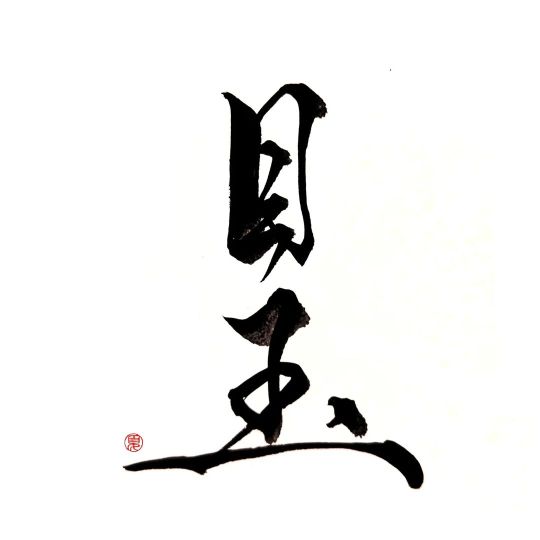
#目玉 #eyeball . #目 #玉 #眼球 #ペン習字 #筆ペン #漢字 #書道 #書法 #書遊 #毛筆 #墨 #習字 #日本文化 #筆文字 #文字 #和文化 #創作書道 #インスタ書道部 #書道好きな人と繋がりたい #眼 #eyeballs https://www.instagram.com/p/CovKs_2yBXs/?igshid=NGJjMDIxMWI=
#目玉#eyeball#目#玉#眼球#ペン習字#筆ペン#漢字#書道#書法#書遊#毛筆#墨#習字#日本文化#筆文字#文字#和文化#創作書道#インスタ書道部#書道好きな人と繋がりたい#眼#eyeballs
2 notes
·
View notes
Text
みんな知らない「実は略語」の言葉をまとめました。詳しくは...
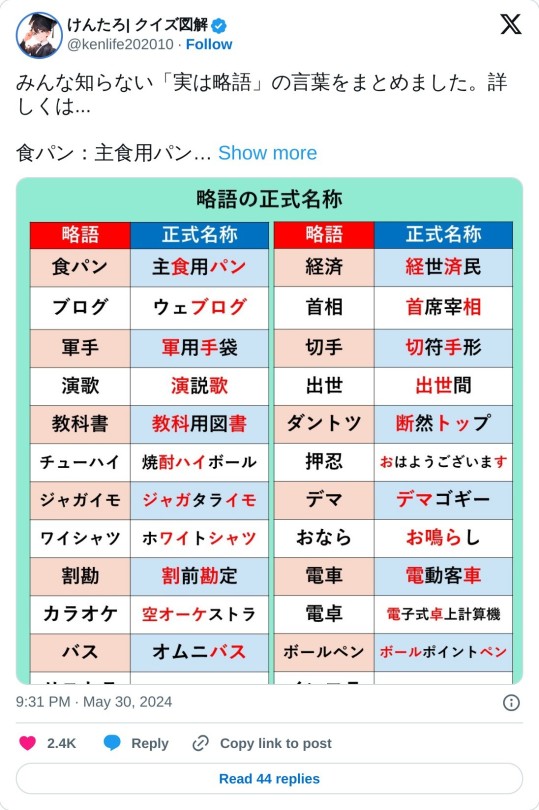
食パン:主食用パン
食パンの語源に関しては複数ありどれが正しいかわかりませんが、有力な説を2つ紹介します。1つは、「主食用パン」の略。パンが日本に入って来た当時はイースト菌などもなく、比較的小さな菓子パンだけが作られていました。それからパンが大きく膨らむようになり、米の代わりになり得るようになったため、「主食用」と名付けられました。もう1つは、消しパンではない「食べられるパン」の略。昔は美術のデッサンなどでパンを消しゴム代わりに使用していたためです。
ブログ:ウェブログ
ウェブサイトの一種で日記形式のもの。英単語でも”blog”がありますが、もともとは”Web”と記録を意味する”log”が合わさった言葉である”web log”の略です。
軍手:軍用手袋
元々軍隊用の手袋として使われていたためです。日露戦争の際に、寒冷地を戦場とする兵士に支給するために考案されたものです。その後、荷物運搬や土いじりなど日常生活で使われるようになりました。
演歌:演説歌
元々は自由民権運動の政治運動家(壮士)たちが演説の代わりに歌った壮士節が始まりとされます。1930年代にジャズやクラシックが大衆歌に組み込まれていき、歌詞も政治とは関係のない叙情詩的なものに変わっていきました。
教科書:教科用図書
主に小・中・高および特別支援学校などで学ぶ時に配布される中心的な教材のことで、「教科用図書」の略です。教科書と教材の違いは、文部科学大臣の検定に合格したものが教科書と呼ばれます。
チューハイ:焼酎ハイボール
焼酎とハイボールを組み合わせた「焼酎ハイボール」の略語。焼酎やウォッカなど無色で香りのない酒類をベースに、炭酸で割ったものを一般的に指しますが、炭酸ではなくウーロン茶で割ったウーロンハイもチューハイの一種です。
ジャガイモ:ジャガタライモ
ジャガイモはそもそも南米原産の食材であり、日本には16世紀末にインドネシアのジャカルタからオランダ人により伝えられました。そのため当時は「ジャガタライモ」と呼ばれていましたが、後に略されていきました。ちなみに日本では中国語由来の馬鈴薯とも呼ばれます。
ワイシャツ:ホワイトシャツ
主に男性が背広の下に着るシャツのことですが、元々は和製英語である「ホワイトシャツ」の略。よく「Yシャツ」と記載されることがありますが、これは完全に当て字です。一方で、「Tシャツ」はアルファ���ットのTの字に似ているためこう呼ばれるようになりました。
割勘:割前勘定
友人との飲み会などでよくある割勘は「割前勘定」の略。割前とは分割してそれぞれに割り当てることを意味する言葉です。江戸時代後期の戯作者で浮世絵師として有名な山東京伝が発案されたと言われており、当時は「京伝勘定」と言われていたそうです。ちなみに世界的に見ると割勘の文化は少数派で、男性や年上が払うのが一般的のようです。
カラオケ:空オーケストラ
歌のないオーケストラの意味で、「空(から)オーケストラ」から「カラオケ」と略されました。カラオケは日本で1960年後半に誕生したとされ、その後世界に広がっていきました。そのため英語でも”karaoke”と書きます。ちなみに中国語では「卡拉OK」と突然アルファベットが出てくる不思議です。
バス:オムニバス
ラテン語で「すべての人のために」という意味の「オムニバス」が語源で、フランスの乗合馬車の発着所の雑貨屋の看板に書かれていたことに由来します。そこから多くの人が利用する乗合自動車をオムニバスと呼ぶようになり、その後略されました。
リストラ:リストラクチャリング
英語で「再建」を意味する”restructuring”から略されたものです。リストラと聞くと人員削減をイメージしますが、本来の意味は事業構造を再構築することです。その中の一環として、人員削減が起こります。
リモコン:リモートコントロール
英語で「遠隔操作」を意味する”remote control”から略されたものです。TVなどに向かってリモコンから赤外線をデジタル信号で送ることでチャンネルや音量などを操作することができます。
ソフトクリーム:ソフト・サーブ・アイスクリーム
海外では「柔らかいクリーム?」となり伝わらない和製英語です。英語では” soft serve icecream”であり、ソフトクリームサーバーの製造などを行っている日世の創業者・田中穰治が日本でソフトクリームを広めるのにわかりやすくするために省略したとされています。
ペペロンチーノ:アーリオ・オーリオ・ペペロンチーノ
唐辛子をオリーブ油で炒めたパスタ料理。正式名称は「アーリオ・オーリオ・ペペロンチーノ」と言います。イタリア語で「アーリオ」は「ニンニク」、「オーリオ」は「オリーブオイル」、「ペペロンチーノ」は「唐辛子」を意味しています。
経済:経世済民
中国の晋朝について書かれた歴史書である『晋書』に書かれた「経世済民」を略した言葉です。現在の政治と同じような意味で昔から使われていました。明治以降、”economy”の訳語として頻繁に使われるようになったようです。
首相:首席宰相
首席はトップを意味し、宰相は辞書で調べると「古く中国で、天子を補佐して大政を総理する官。総理大臣。首相。」と載っています。首相の言葉の中に首相が含まれている二重表現のような言葉です。ただ「首相」は日本国憲法に記載された言葉ではなく、報道などで使われる内閣総理大臣の通称です。
切手:切符手形
お金を払って得た権利の証明となる紙片のことを古くから「切手」と呼んでいました。日本の近代郵便制度の創始者である前島密が、“郵便物に貼って支払済を表す印紙”に「切手」という言葉をそのまま当てたそうです。
出世:出世間
元々は仏教語で、仏陀が衆生を救うためにこの世に出現することを指す言葉で、「出+世間」でした。そこから略され、日本では僧侶が高い位に上ることを意味するようになり、世間一般でも役職が上がることなどを指す言葉となりました。
断トツ:断然トップ
2位以下を大きく引き離すことを指す言葉ですが、元は「ずば抜けて」の意味を持つ「断然」と首位を表す英語の”top”が合わさった言葉の略。そのため「断トツの1位」という表現は二重表現になります。
押忍:おはようございます
朝の挨拶である「おはようございます」から「おっす」と短くなり、さらに「おす」へと略されました。そこから「自我を押さえて我慢する」という意味を込めて「押忍」という漢字が当てられました。
デマ:デマゴギー
大衆を扇動するための政治的な宣伝を意味するドイツ語の「デマゴギー」を略したものです。元の意味の通り、政治的な意味合いを持つ言葉でしたが、昭和になってから、単純に「嘘」や「根拠のない噂」の意味で使われるようになりました。
おなら:お鳴らし
屁を「鳴らす」の名詞である「鳴らし」に「お」をつけて婉曲に表現した言葉で、そこから一文字略されました。元々の言い方の方が上品な感じがあって良いですよね。というのも、一般庶民は昔から「屁」と言っていましたが、宮中に仕える女房たちは隠語として用いていたためです。
電車:電動客車
電動客車をより細かく表現すると、「電動機付き客車」または「電動機付き貨車」となります。電車は架線あるいは軌道から得る電気を動力源として走行しています。
電卓:電子式卓上計算機
計算機という本来役割を表す意味の言葉が略されています。1963年に世界初の電卓が登場し、1964年に現在のシャープから日本初の電卓が発売されました。当時の価格は53万5千円と車を買えるほどの値段でした。今では100均で売られているものもあるのに驚きですね。
ボールペン:ボールポイントペン
英語で”ball-point pen”と言い、これを略した言葉です。ボールという単語が使われている理由は、ボールペンの構造上、先端に小さな回転玉(ボール)があるためです。
インフラ:インフラストラクチャー
英語で「下部構造」や「基盤」を意味する”infrastructure”から略されたものです。電気・ガス・水道・電話・道路・線路・学校や病院などの公共施設など、私たちの生活に欠かせないものを指す言葉となっています。
シネコン:シネマコンプレックス
「コンプレックス”complex”」が「複合の」を表す英単語で、同一ビル内に複数のスクリーンを備えた複合型映画館のことを表します。国内の代表的なものとしては、TOHOシネマズ、イオンエンターテイメント、MOVIX、ユナイテッド・シネマなどがあります。
シャーペン:エバー・レディー・シャープペンシル
シャーペンが「シャープペンシル」の略ということを知っている方は多いと思いますが、実はこれも略語。1838年にアメリカで「エバーシャープ」という筆記具が登場し、その後1915年に現シャープの創設者である早川徳次氏が国内初となるものを考案し、「エバー・レディー・シャープペンシル」という商品名をつけヒットさせました。
ピアノ:クラヴィチェンバロ・コル・ピアノ・エ・フォルテ
イタリア語で「小さい音と大きい音を出せるチェンバロ」という意味です。いつの間にか「小さい音」を表すピアノだけに略され、楽器を表す名詞となりました。元のピアノの意味は今でも音の強弱を表す「メッゾピアノ」や「ピアニッシモ」と合わせて音楽記号として使われていますね。
361 notes
·
View notes
Text
お~ & ご~ Polite Language
丁寧語 (ていねいご・Polite Language)・美化語 (びかご・Refined Language)
Two of the major components of polite and refined language (丁寧語 and 美化語) are the prefixes お~ and ご~. Both can be represented by the kanji 御 (and in some cases it can also be pronounced おん). There is no hard and fast rule as to which words do and don't use お~ or ご~ so in general you need to memorize which words can have this prefix as well as which reading to use (although often it is written in kana). However, there are a few general principles which can help you to choose.

お~
Language used to make one's language more refined. Used at the beginning of nouns and adjectives. It can also be used with verb stems and adverbs in certain situations. In general, お~ attaches to nouns that are native Japanese words (和語, わご), but some words of Chinese origin (漢語, かんご) can also take this prefix. Words with this prefix are often related to words used in daily life, such as food and drink, or things related to everyday tasks.
ご~
A word placed at the beginning of a noun or adjective to indicate politeness. Only used for kanji compound words in which the first character is an on'yomi character, therefore words of Chinese origin (漢語, かんご). The words attached to this prefix are often abstract nouns, and not physical objects. There are a few native Japanese (和語, わご) adverbs and adjectives that can use this prefix. While お~ is usually in kana, ご~ is most commonly written in kanji.
Integrated Words
お and ご have become such an integral part of some words, that they cannot be removed and do not add politeness or respect to the word.
Examples:
おにぎり onigiri, rice ball
おはよう good morning
おなら fart
ごめん sorry
ごはん meal, rice
Deciding whether to use お~ or ご~ or no prefix at all
お~ and ご~ are often used to convey a feeling or respect or politeness towards the person you are addressing, so while you often use it with words that belong to the person, words that don't belong to the person are less commonly heard. お車 (おくるま) can be used to talk about a superior's car, but you wouldn't say お飛行機 (おひこうき) or お電車 (おでんしゃ) because those don't belong to them.
お~ and ご~ aren't used with katakana words, so you won't find it used with loan words. However, おトイレ can be used, probably because it is an everyday word.
What about おん?
In spoken formal Japanese, 御 is pronounced as おん when the word it is attached to is referring to an organization. For example: 御社 (おんしゃ, your (someone else's) company), and 御校 (おんこう, your (someone else's) school). [Note: In formal writing, 貴社 (きしゃ, your company) and 貴校 (きこう, your school) are used.] You can also read 御礼 (gratitude) as either おれい or おんれい, with おんれい being the more formal of the two.
Oh wait, I forgot to mention み~
A much less common reading of the prefix 御 is み, which is specifically used when talking about or to someone who deserves the highest respect - Buddha, God, the emperor, members of the imperial family. 御心 is usually read as おこころ but is read as みこころ when referring to the 心 (heart/love) of Buddha, God, or the emperor. 御国 (みくに) is country, 御名 (みな) is name, 御手 (みて) is hand, 御顔 (みかお) is face, and 御霊 (みたま) is spirit when referring to these entities of high respect.
And then there is ぎょ~
When 御 is read as ぎょ it shows respect to the emperor and his family, whether it's used as a prefix or not. 崩御 (ほうぎょ) is used only to refer to the death of the emperor or a member of the imperial family. Most of the words using ぎょ are very specialized, however a few are known in mainstream use. 御意 (ぎょい) originally was used to talk about the will of the emperor, but came to mean "as you wish" and can be used for anyone of a higher status than you. It is in use today, but is very formal and a bit old-fashioned. It's most common in writing. 御者 (ぎょしゃ) originally meant a coachman who drove a horse-drawn coach or carriage for the emperor and the imperial family, but today it is a general word for coachman.
Examples
Now to the examples!
Nouns
お名前 おなまえ name
ご家族 ごかぞく family
Adjectives
お優しい おやさしい kind
ご丁寧 ごていねい polite
Adverbs
お近く おちかく near
ごゆっくり take your time
Verbs
Used with the pattern お・ご~する or お~になる
お預かりする おあずかりする to look after
ご活躍する ごかつやくする to be active
お食べになる おたべになる to eat
My textbook: 外国人のための日本語敬語の使い方基本表現85
#日本語#japanese#japanese language#japanese langblr#japanese studyblr#langblr#studyblr#敬語#丁寧語#美化語#formal japanese#keigo#polite language#respectful language#tokidokitokyo#tdtstudy
170 notes
·
View notes
Text


























我的女兒性喜吃辣,所以她前天帶我去吃台灣連鎖餐飲集團的瓦城-泰國料理 | 大心新泰式麵食 - 高雄三越三多店,真的很開心。我們母女天南地北的聊天... 從頭頂聊到腳趾頭 lol,又從尼泊爾聊到愛爾蘭,哈哈哈!我們回到工作室一起邊工作邊聊天,一天的時間飛逝;(我的兒子和女兒他們都有過敏性體質,不適合睡在工作室的空間裡,不像我這個流浪漢哪裡都可以睡。XD) 總之距離她要離境飛往愛爾蘭還有約二十多天,除非我飛去找她,否則咱們母女將要一年無法相見,想到這裡突然又讓我難過... 🥲 但只要我想到她在做自己喜歡的事,並且總是很有勇氣地努力實現她的夢想,我就不難過,反倒為她感到高興和驕傲。
My daughter likes spicy food, so she took me for lunch at the Taiwanese chain restaurant group 瓦城THAI TOWN-Thai Cuisine | BHEART NOODLES New Thai Noodles - Kaohsiung Mitsukoshi Sanduo Store the day before yesterday. We were really happy. We chatted about everything under the sun… from the top of our heads to our toes lol, and from Nepal to Ireland, hahaha! We returned to the studio and worked and chatted together, and the day passed quickly; (My son and daughter both have allergies, so it is not suitable for them to sleep in the studio, unlike me, a homeless person who can sleep anywhere. XD) Anyway, there are about twenty days left before she leaves for Ireland. Unless I fly to see her, we will not be able to see each other for a year. (I mean to see her in person & hug her in warm.) Thinking of this suddenly makes me sad… 🥲
But as long as I think that she is doing what she likes and is always courageous enough to work hard to realize her dreams, I am not sad, but happy and proud of her. ◠‿◠ ˗ˋˏ ♡ღ ˎˊ˗


#chu lan#朱蘭皮藝#fine craft artist#leather art artist#daily life#my daughter#my family my love my life#eat live love#beautiful life#thai food#noodles#yummy 😋
65 notes
·
View notes
Text
Why do i-adjectives and na-adjectives conjugate so differently?
In Japanese, adjectives are categorized into two main types: i-adjectives and na-adjectives. These two types differ in their forms and the way they conjugate.
I-adjectives end with the syllable "い" (i) in their base form and they can directly modify nouns without needing any additional particles. This is how they conjugate:
Base Form: 高い (takai) - "high" or "expensive"
Negative: 高くない (takakunai) - "not high" or "not expensive"
Past: 高かった (takakatta) - "was high" or "was expensive"
Past Negative: 高くなかった (takakunakatta) - "was not high" or "was not expensive"
Na-adjectives usually end with a consonant followed by a vowel other than "い" in their base form. When directly modifying a noun, they must be followed by the particle "な" (na). They do not conjugate in the same way as i-adjectives; instead, their conjugation often involves the copula "です" (desu) or "だ" (da). This is how they conjugate:
Base Form: きれい (kirei) - "beautiful" or "clean"
Negative: きれいではない (kirei dewa nai) / きれいじゃない (kirei ja nai) - "not beautiful" or "not clean"
Past: きれいでした (kirei deshita) - "was beautiful" or "was clean"
Past Negative: きれいではなかった (kirei dewa nakatta) / きれいじゃなかった (kirei ja nakatta) - "was not beautiful" or "was not clean"
The differences between i-adjectives and na-adjectives in Japanese stem from their historical and linguistic origins. I-adjectives are part of the native Japanese vocabulary, known as "和語" (wago), and their conjugation pattern can be traced back to classical Japanese. In contrast, many na-adjectives originated from Chinese loanwords (known as "漢語" or kango) and nouns. When Chinese words entered Japanese, they often carried descriptive qualities but did not fit neatly into the existing adjective conjugation system. As a result, they were adapted in a way that treated them more like nouns that required a particle ("な") to function adjectivally. Na-adjectives can be considered "nominal adjectives" because they behave similarly to nouns. They need the copula "です" or "だ" to form predicates, and they use "な" to modify nouns, indicating their grammatical status is closer to nouns than to i-adjectives.
In conclusion, the distinction between i-adjectives and na-adjectives in Japanese is rooted in historical and logical reasons: this division not only reflects the historical integration of foreign elements into Japanese but also maintains a logical grammatical structure that differentiates between native and adapted forms.
324 notes
·
View notes
Quote
一色正春氏が指摘する中国の9悪↓ ①尖閣領海の侵略 ②東シナ海や南鳥島のEEZ無視 ③日本人虐殺事件真相究明 ④スパイ容疑と称する拉致監禁 ⑤野放図な免許行政による重大交通事故 ⑥反日教育による日本人差別 ⑦歴史捏造による反日国際世論誘導 ⑧相互主義に反する土地の買い占め ⑨武漢ウイルスに対する賠償…等々 これらを無視してビザ緩和?冗談でしょ
Xユーザーの門田隆将さん: 「一色正春氏が指摘する中国の9悪↓ ①尖閣領海の侵略 ②東シナ海や南鳥島のEEZ無視 ③日本人虐殺事件真相究明 ④スパイ容疑と称する拉致監禁 ⑤野放図な免許行政による重大交通事故 ⑥反日教育による日本人差別 ⑦歴史捏造による反日国際世論誘導 ⑧相互主義に反する土地の買い占め」 / X
66 notes
·
View notes
Text

"Shio-ume (塩梅 = Salt plum)"?
Deciding, after all this time, to read more novels to strengthen my Japanese and expand my vocabulary, I scoured the books I had always wanted to read, especially my late father's bookshelves. Naturally, all I found were classic Japanese literature dating back to the pre-Showa period and even centuries earlier.
Two words that have been on my mind recently are ‘Salt plum (塩梅)’.
‘What... suddenly the salt plum...?’
A large red pickled plum with salt gushing out on the surface comes to mind for a moment. However, when reading a novel, the flow of the story is more important, so I seldom stop at a single word, whatever the language.
‘Anbai (塩梅 = just right)’? is this kind of kanji characters. ‘Eh, eh.’
The word means ‘salt and plum vinegar’, and in the days when there was no vinegar, the ume vinegar produced when pickled plums were used to season food. The word was derived from the fact that the taste was ‘It's just right’.
However, this has been a challenge. The Japanese language is deep. Language is a useful tool for learning about a country's history and culture.
Anyway, I made and ate rice balls with salt plums with the seasonal new rice. Yum, Yum!
[Note: Umeboshi (salted ume-plums) are extremely sour and salty that will make saliva spread through your mouth with a sizzle if you are Japanese, just by reading the words or looking at the image.]

「しおうめ」?
今更ながら、日本語を強化し語彙を増やすためにもっと小説を読もうと思い、私はずっと読みたかった本、特に亡き父の本棚を漁った。当然のことながら、私が見つけたのは昭和以前、さらには数世紀前までさかのぼる古典的な日本文学ばかりだ。
近ごろ気になっていた単語が「塩梅」という2文字。
「えっ、いきなり塩梅って…なんだ…?」
塩が表面に噴き出した大粒の赤い梅ぼしが1ケ、一瞬脳裏に浮かぶ。しかし、小説を読むときは、ストーリーの流れの方が重要なので、どんな言語であろうと、一語で立ち止まることはめったにない。
しかし、度々目にすると、流石に気になって調べた。
「あんばい」?ってこういう漢字なんだ。「え、えー��」!
「塩と梅酢」という意味で、食酢がなかった時代に梅を漬けたときにできる梅酢を使って料理の味付けをしていたそうだ。その味が「良いあんばい」だったことが語源とのこと。良い考えだ!これからは余った梅酢は料理に使おう、と思った。体にも良さそうだ。
しかし、これには参った。日本語は奥が深い。言語とは、その国の歴史や文化を知る上で有効なツールだ。
ともあれ、旬の新米で梅干しおにぎりを作って食べた。うまいうまい!
#umeboshi#Japanese salt plum#language#kanji#culture#traditions#onigiri#rice ball#journal#japanese food#art#nature
94 notes
·
View notes